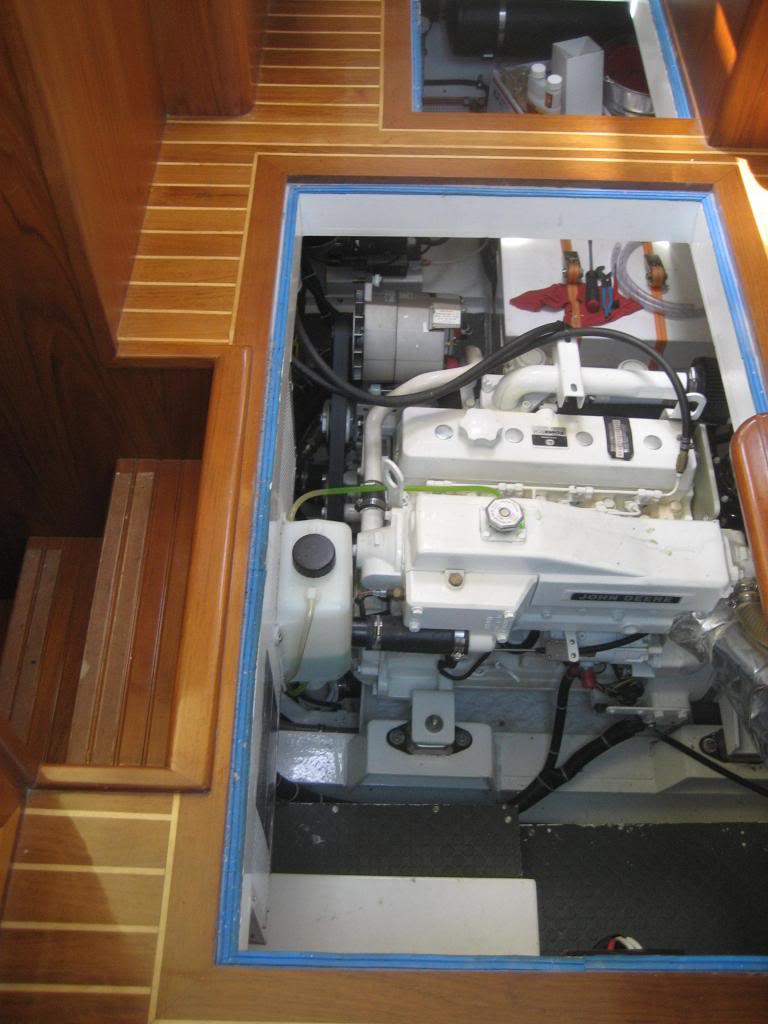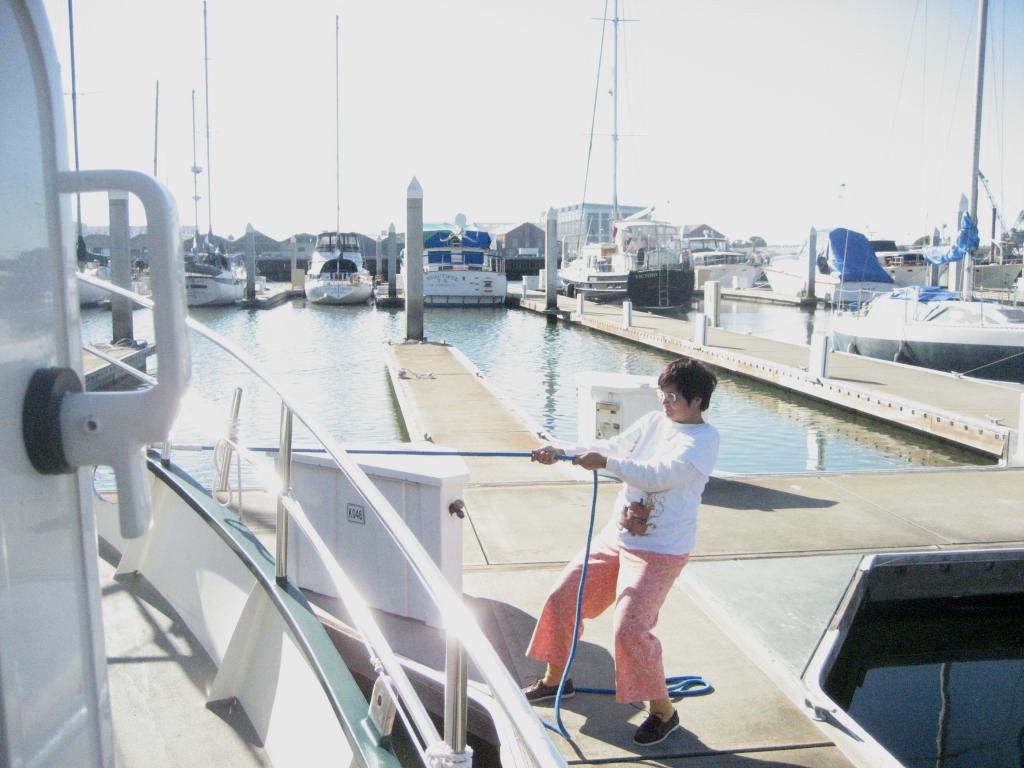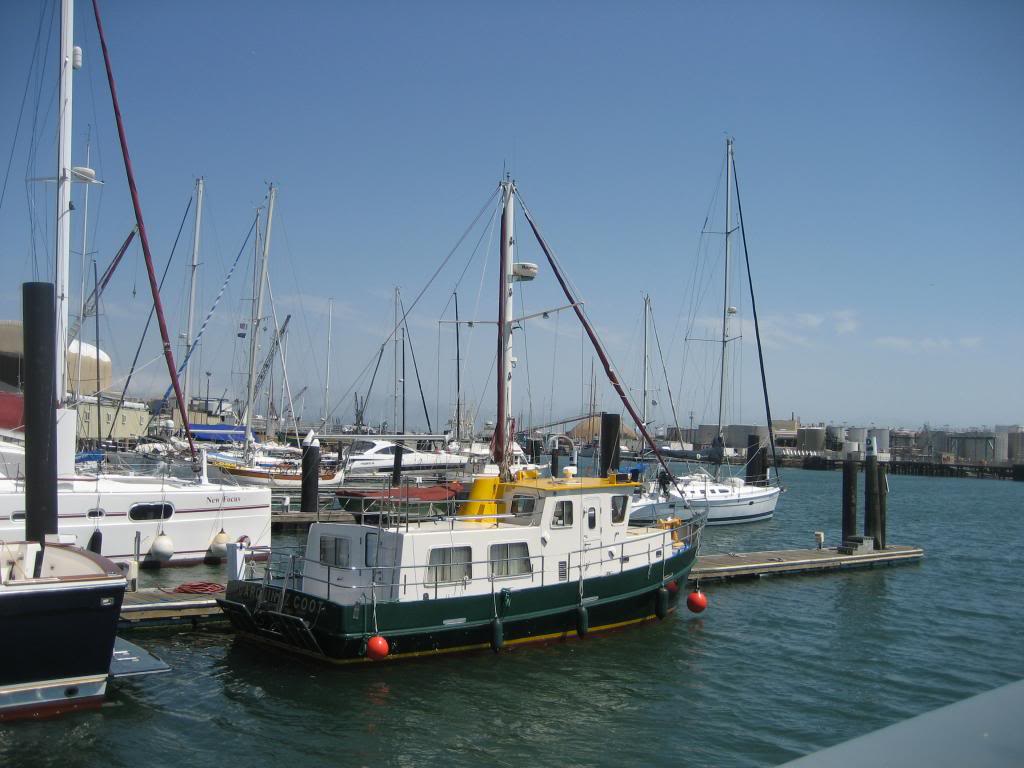markpierce
Master and Commander
- Joined
- Sep 25, 2010
- Messages
- 12,557
- Location
- USA
- Vessel Name
- Carquinez Coot
- Vessel Make
- penultimate Seahorse Marine Coot hull #6

My Coot is at the KKMI boatyard in Richmond, CA (authorized John Deere engine servicer) for it's 250-hour, 24-month engine service. Includes valve adjustment and so on.
Visited the boat today (Sunday) and the maintenance/service is still in-progress.

The haul-out showed the bottom paint and zincs are good for another year.

Meanwhile, also having maintenance done to the outside paint.

The boat is considered a "yacht" by some because maintenance is mostly done professionally.






